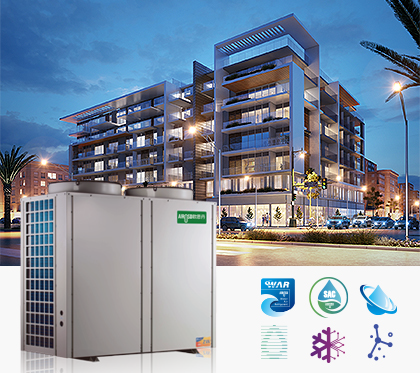Heat pumps are efficient and eco-friendly heating and cooling systems. However, during colder months, they can sometimes accumulate frost or ice on their outdoor units, reducing their efficiency. Defrosting your heat pump is crucial to ensure optimal performance and prevent potential damage. Here are some steps to guide you on how to defrost a heat pump effectively in the article!
Step 1: Identify The Need For Defrosting
Before you start any work, it's important to recognize when defrosting is necessary. Look out for signs like a drop in heating efficiency, strange sounds from the outdoor unit, or visible ice formation. These symptoms can indicate that your heat pump is in dire need of a defrost.

Wholesale Domestic Water Heater Pump Factory
Step 2: Power Down the Heat Pump
Safety first! Always switch off your heat pump before you begin the defrosting process. Find the power switch or circuit breaker and ensure the system is completely powered down to avoid any electrical hazards.
Step 3: Clear the Surrounding Area
Your heat pump needs breathing room. Remove any snow, ice, or debris around the outdoor unit with a soft brush or broom. Be gentle to avoid damaging any fins or coils. Ensuring proper clearance around the unit can facilitate better airflow and more efficient defrosting.
Step 4: Initiate Defrost Mode or Use Cooling Mode
Many modern heat pumps come equipped with an automatic defrost mode. If yours has this feature, activate it according to the manufacturer's instructions. If not, you can set the system to cooling mode for a short period. This will reverse the refrigerant flow, sending warm refrigerant to the outdoor coils to melt the ice.

Hot Water Heat Pump Manufacturer
Step 5: Apply Warm Water If Necessary
For stubborn ice, you may apply a gentle stream of warm (not hot) water to help the process along. Never use boiling water or high-pressure streams, as these can damage the system. Start from the top and let the water work its way down, melting the ice layer by layer.
Step 6: Avoid Physical Force
It might be tempting to chip away at the ice, but this should be avoided at all costs. Sharp tools can cause irreparable damage to the coils and fins of your heat pump. Patience is key; let the warmth and water do their work.
Step 7: Ensure Proper Drainage
As the ice melts, water needs a clear path to drain away from the unit. Check the drainage system and clear any blockages. This will prevent refreezing and ensure that water doesn't back up and cause additional issues.

Step 8: Complete the Thaw and Reactivate
After defrosting, give your heat pump time to thaw completely before you turn it back on. This pause allows all residual moisture to evaporate, which helps prevent immediate refreezing.
Step 9: Keep Up with Regular Maintenance
Regular maintenance is your best defense against frost buildup. Keep your filters clean, refrigerant levels checked, and airflow unobstructed. A well-maintained heat pump is less prone to freezing and will operate more efficiently.
Conclusion
Defrosting your heat pump is a crucial winter maintenance step. By following these guidelines, you can ensure your heat pump operates at peak efficiency and avoid the costly consequences of ice buildup. Remember, if your heat pump is frequently freezing up or failing to defrost, it might be time to consult a professional or consider an upgrade. AIROSD, a premier heat pump manufacturer, offers an array of heat pumps suitable for a variety of climates and needs. Discover the perfect heat pump for your home by visiting our website today!



